Building the Cabs
We originally thought that we would like to build the cabs out of mahogany, but ended up sticking with white pine, which worked just fine, and is probably a fair bit lighter. The standard Fender cabs are usually pine sides with some sort of particle board for the baffles (ugh). We used 3/4" eastern white pine for the cab, 3/4" birch plywood for the baffle board, and 3/8" birch plywood for the back panels. We also found some Fender speaker grill cloth on-line.
So, here are some construction pictures. We did not have a finger joint jig at the time, so we settled for using a biscuit joiner, which was faster, and makes for a very strong joint. We used standard 1x12 pine, so we didn't need to edge glue any boards for the sides and top. After ripping the boards to the proper width, and cutting the top, bottom and sides to the proper length, we cut the chassis cutout out of the top. We used a hole saw to cut the rounded parts, then a small skill saw and a jig saw to finish the process. It took some sanding to get it all smooth, but worked out pretty well.
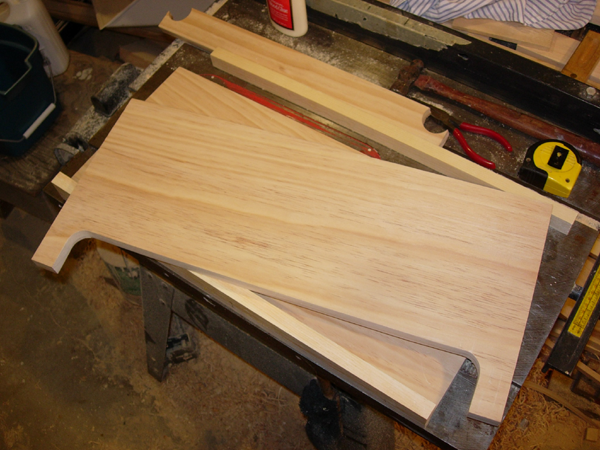
The top piece was the trickiest piece of the main cab.
At this point, we used the biscuit joiner, some biscuits, and good old Titebond glue, to join up the top, bottom and sides.
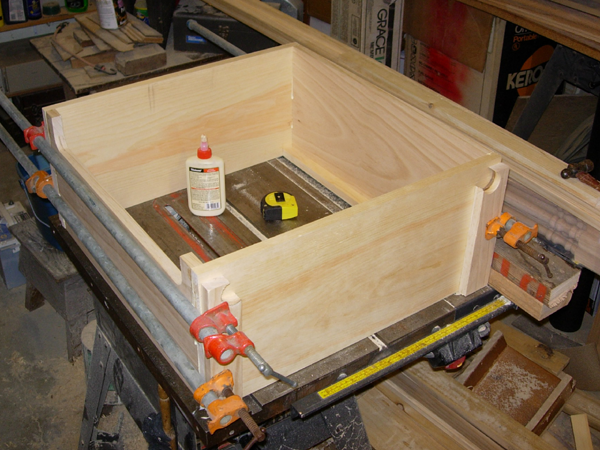
Biscuited, glued, and clamped...
We then added the top and bottom pieces that will hold the baffle. These are biscuited and glued to the top and bottom of the cab as well.
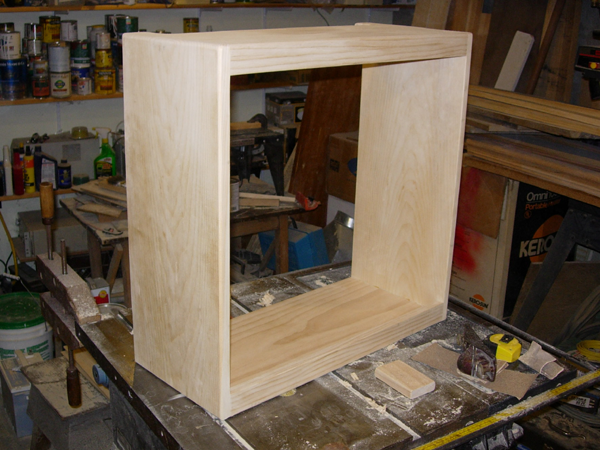
The cab with baffle supports.
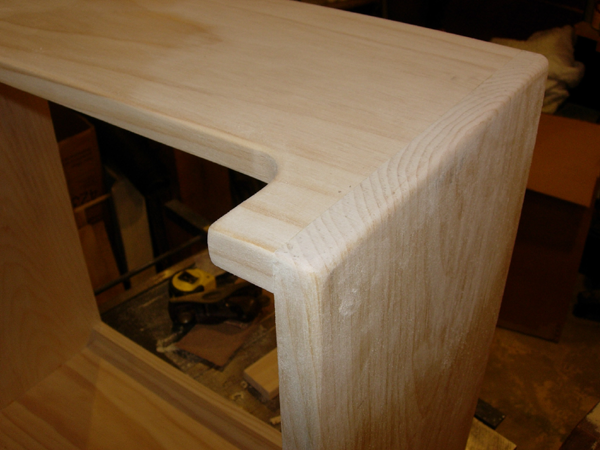
Cab, showing joint and chassis cutout detail.
Time for a mockup! We intentionally made the cab a tad wider than necessary so we wouldn't get stuck in a situation where the chassis was too tight a fit. We figured we could then add shims to get an exact fit (this worked out well). Here we have the chassis in place to check out the clearances. You can also get a look at our colored chicken head knob scheme.
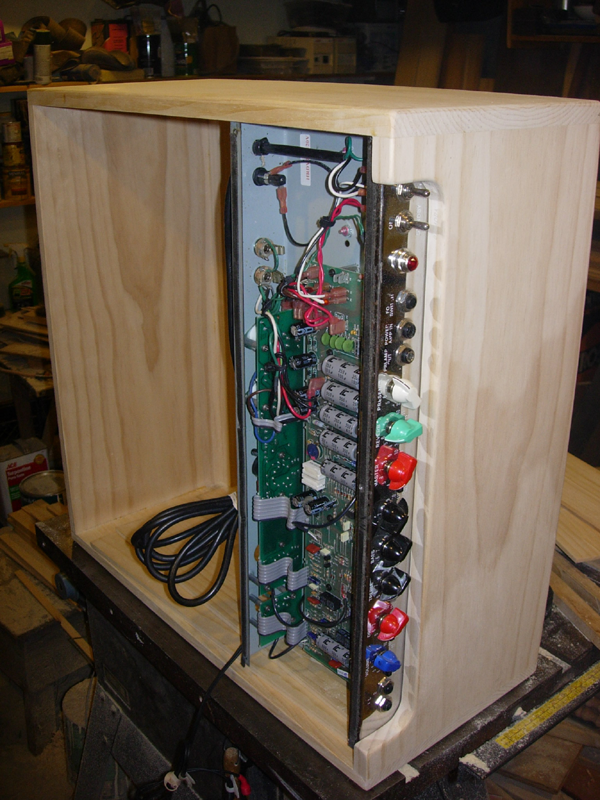
Checking chassis fit and clearances.
We were then able to cut the two pieces that will shim and center the chassis in the cab. After glueing these in, and drilling the mounting holes for the chassis and baffle board, it was time to add the finish. We used Zip Guard "Special Walnut" as the stain, and then three coats of glossy polyurethane.
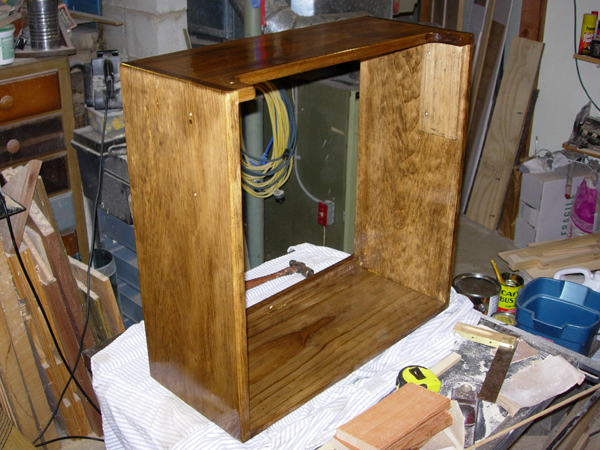
Cab stained and polyurethaned.
The next step was the baffle board. We cut it to fit (with a bit of clearance for the grill cloth), and then set it in place along with the chassis, so we could locate the speaker placement (making sure the speakers cleared the transformers on the chassis).
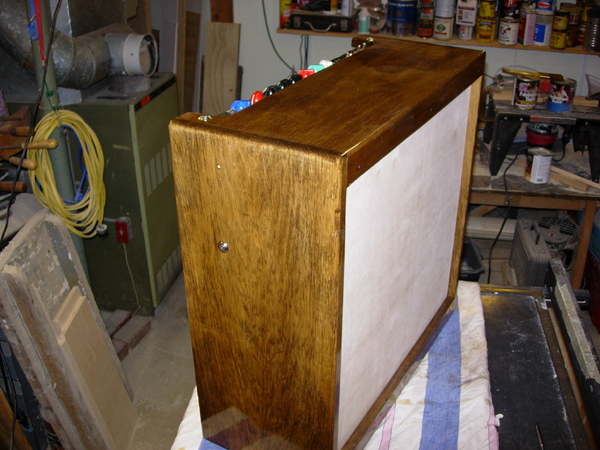
Cab with baffle board and chassis in place.
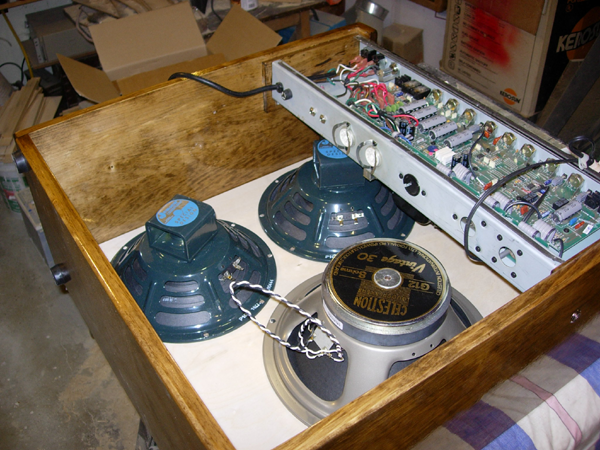
Locating speaker placement.
As you can see here, we used a 12" Celestion, and two 10" Jensens. The Celestion is an 8 ohm speaker, and the Jensens are each 16 ohms. When all in parallel, this results in a 4 ohm load, with the Celestion handling 1/2 of the load, and the two Jensens together handling the other half. This speaker combination has worked out very well. Once the speaker locations were verified, it was time to cut out the holes, and add the fastners for the speaker bolts. We ended up using hurricane nuts sized for #10 machine thread screws. We ground a bit off of the round flange to keep them from hanging over the speaker hole.
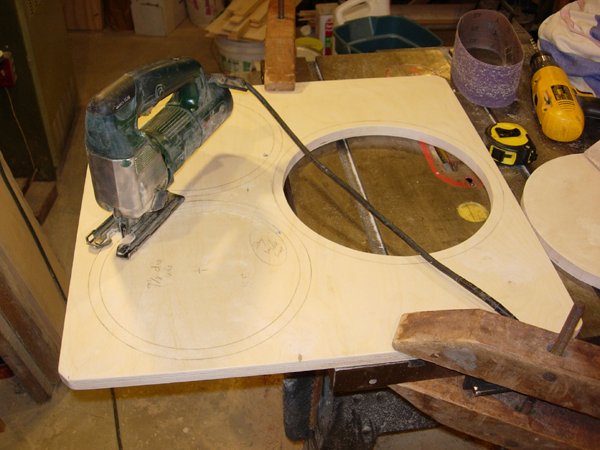
Cutting the speaker holes in the baffle.
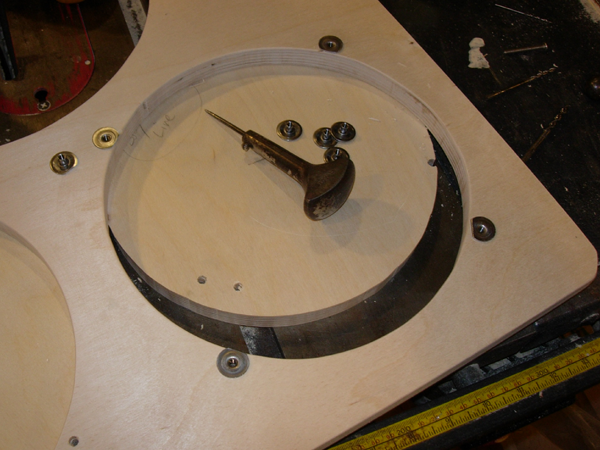
Adding the hurricane nuts.
The last piece of the cab was the rear panel that covers the chassis. The original Fender cabs have two oval "race track" holes for ventilation. To avoid another tricky cutting job, we went with a series of holes using a hole cutter in the drill press, which worked out well.
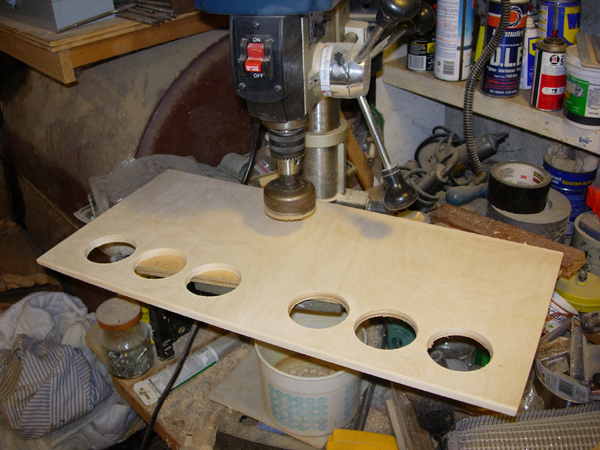
Cutting the speaker holes in the baffle.
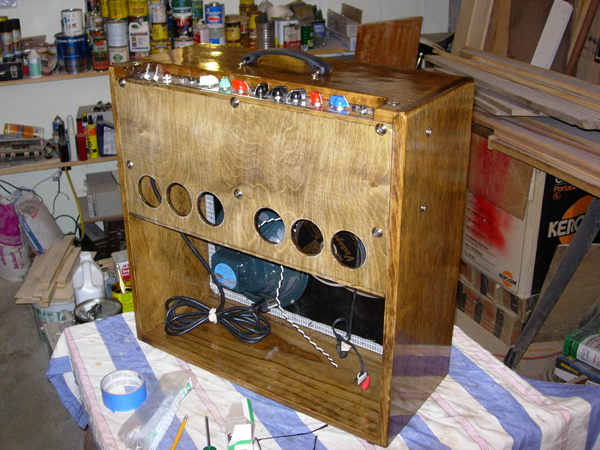
Back panel stained and mounted.
Adding the grill cloth pretty much finishes up the cab.
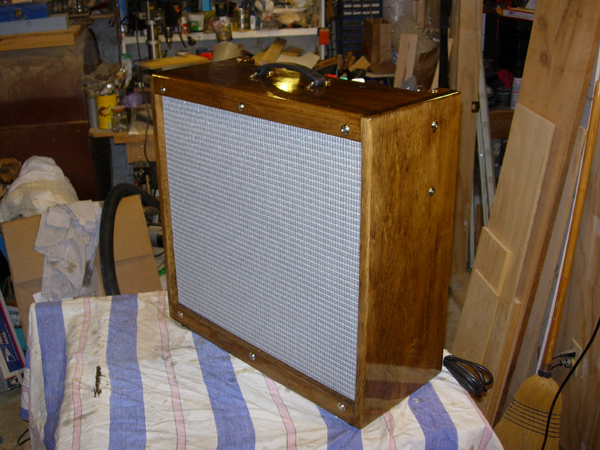
Baffle board with grill cloth.
The last step was to mount the reverb pan. We mounted it up on spacers to give it a bit more isolation from vibrations from the cab.
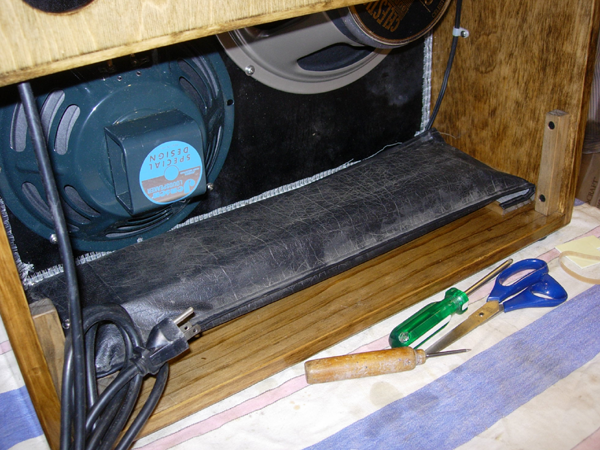
Mounting the reverb pan.
Just need to add the bottom back piece, and we are basically done!


